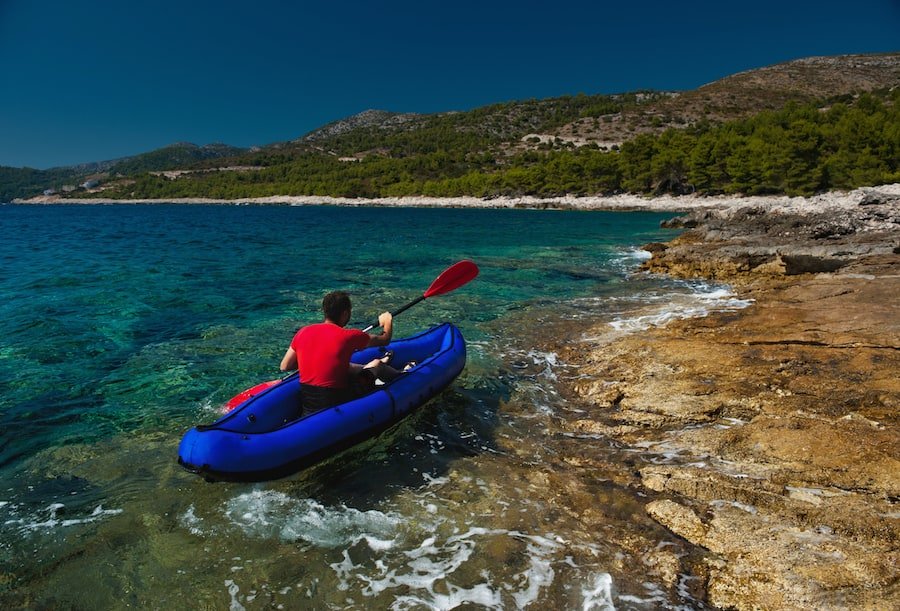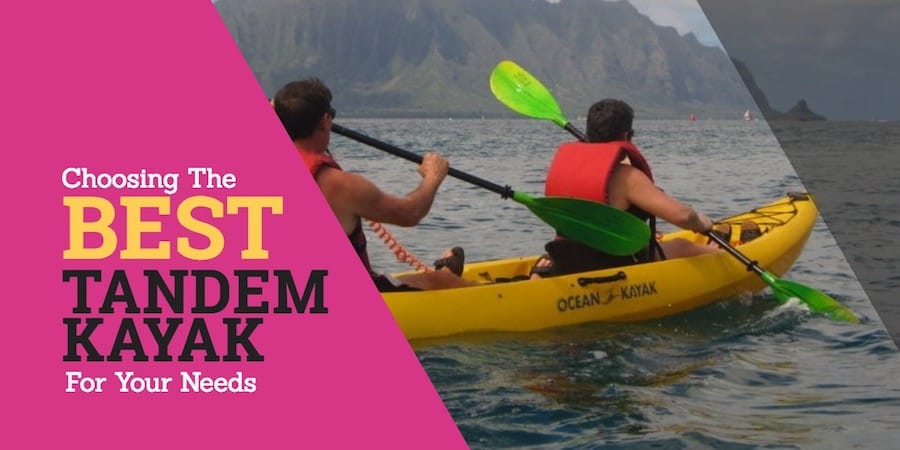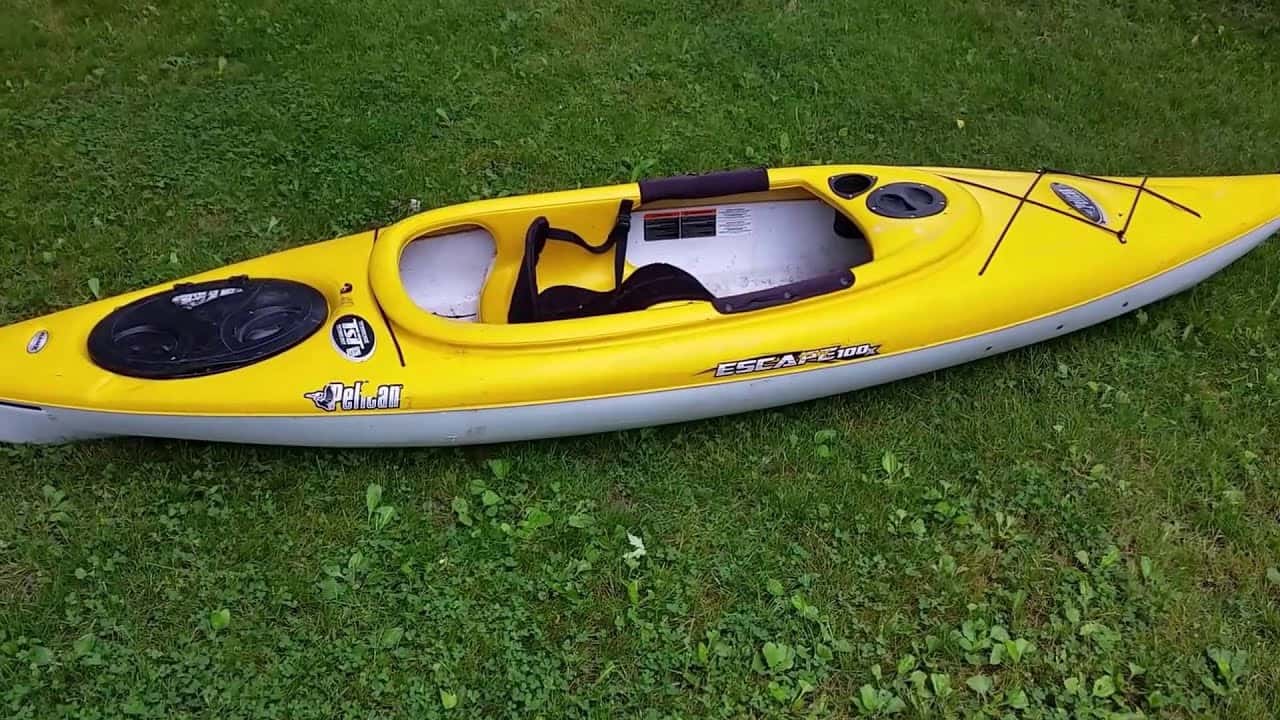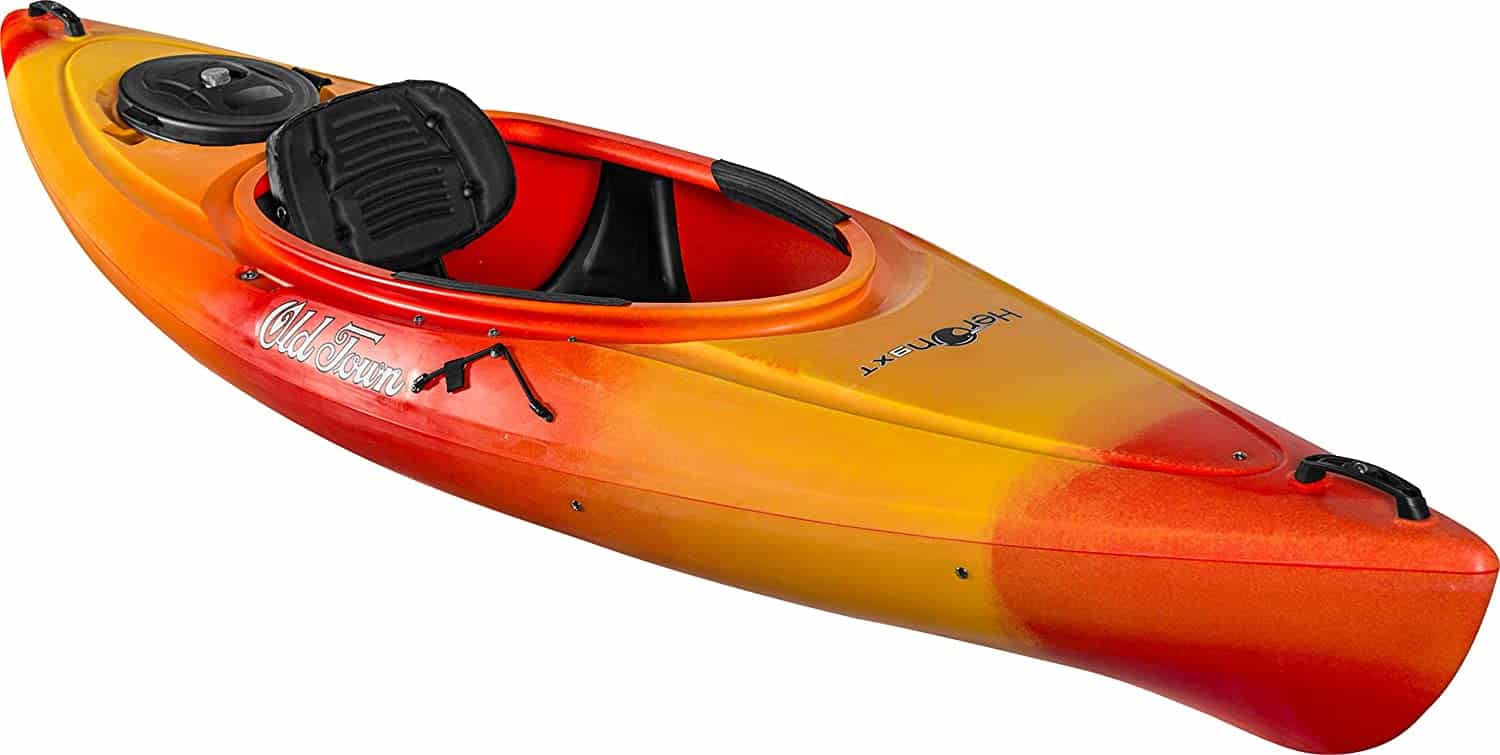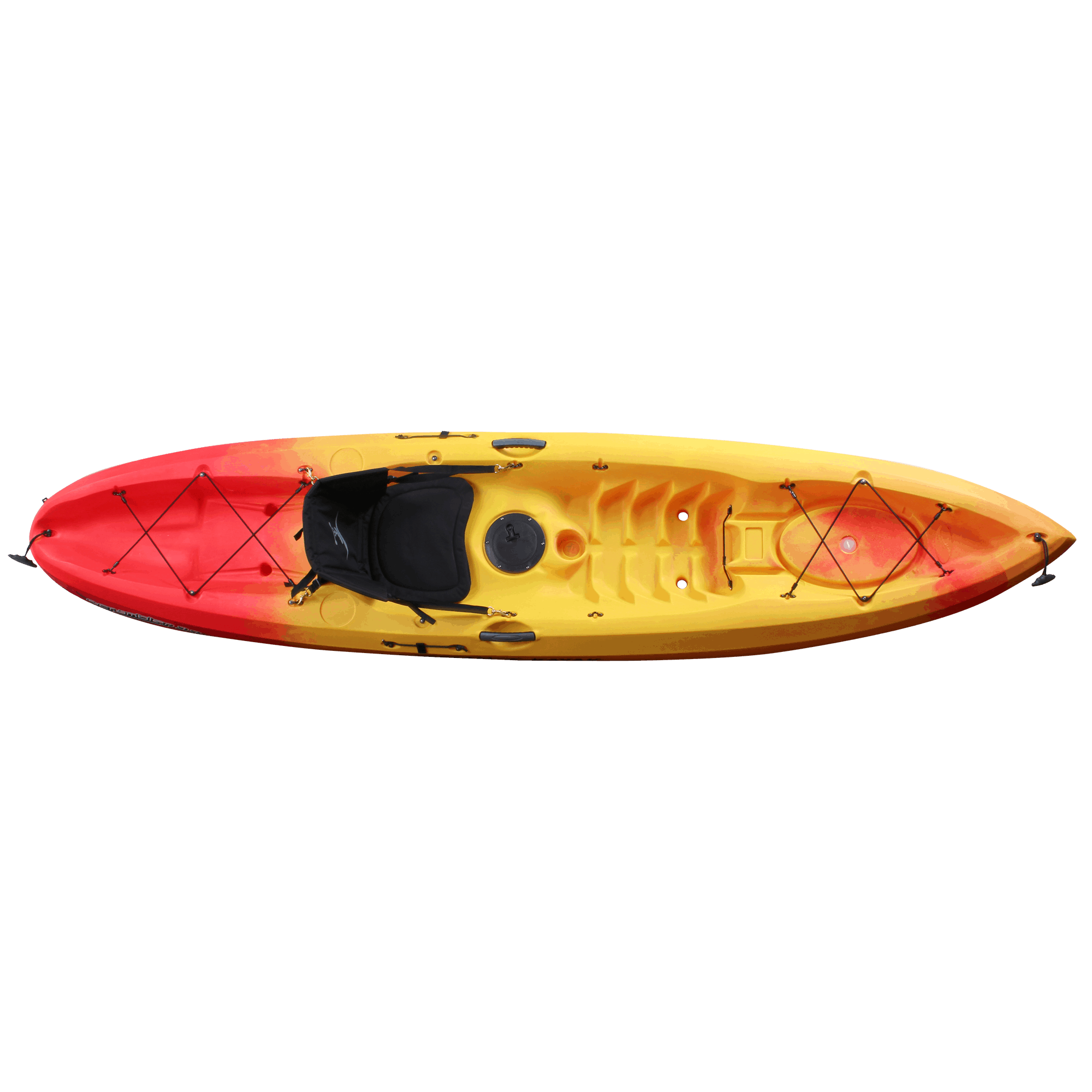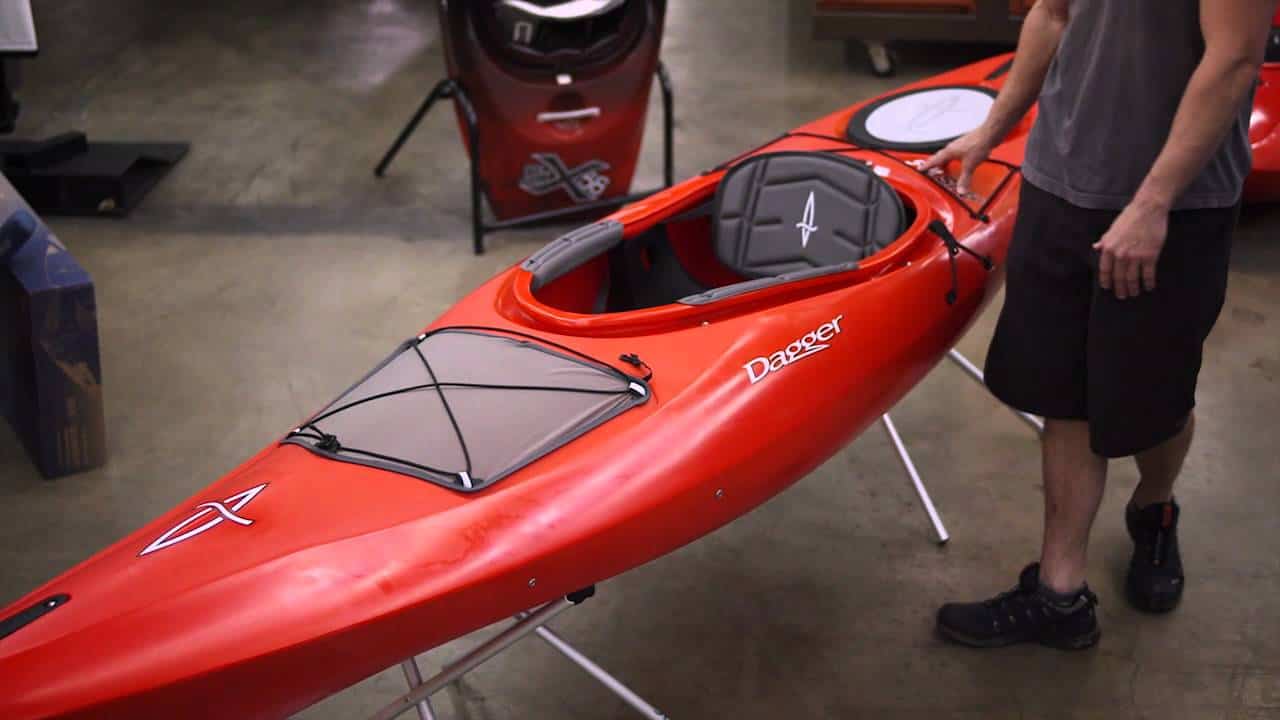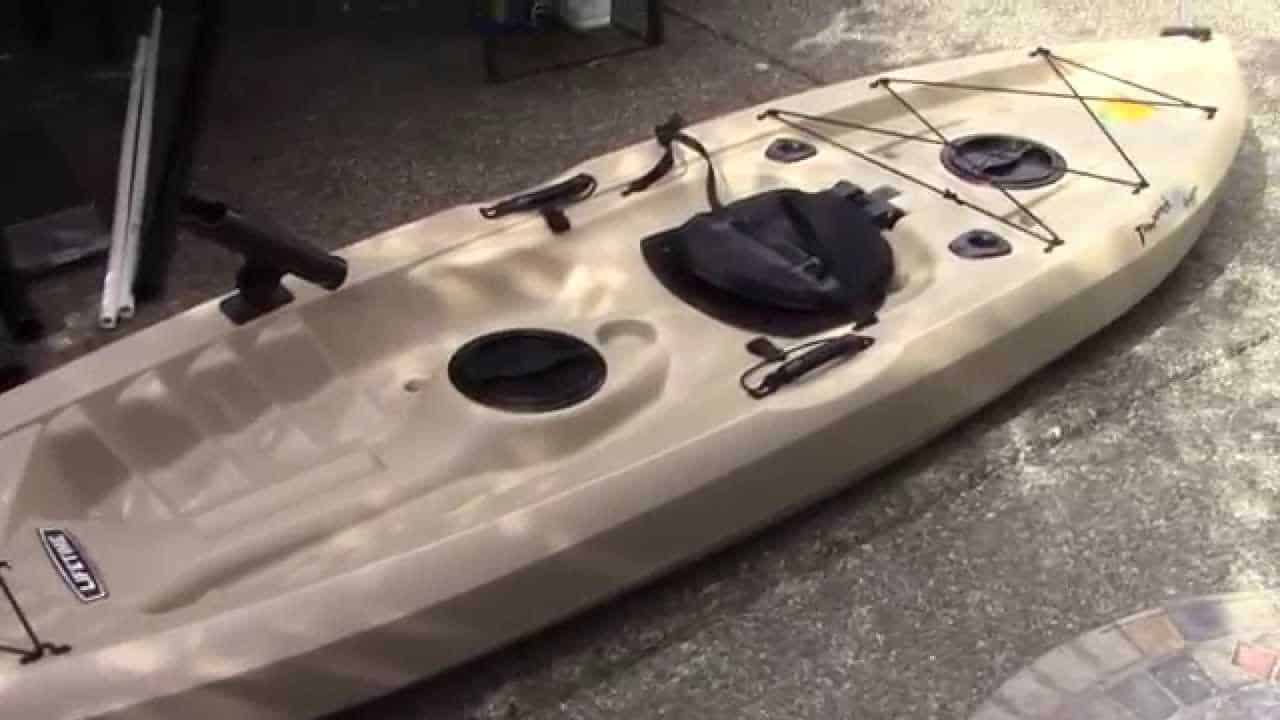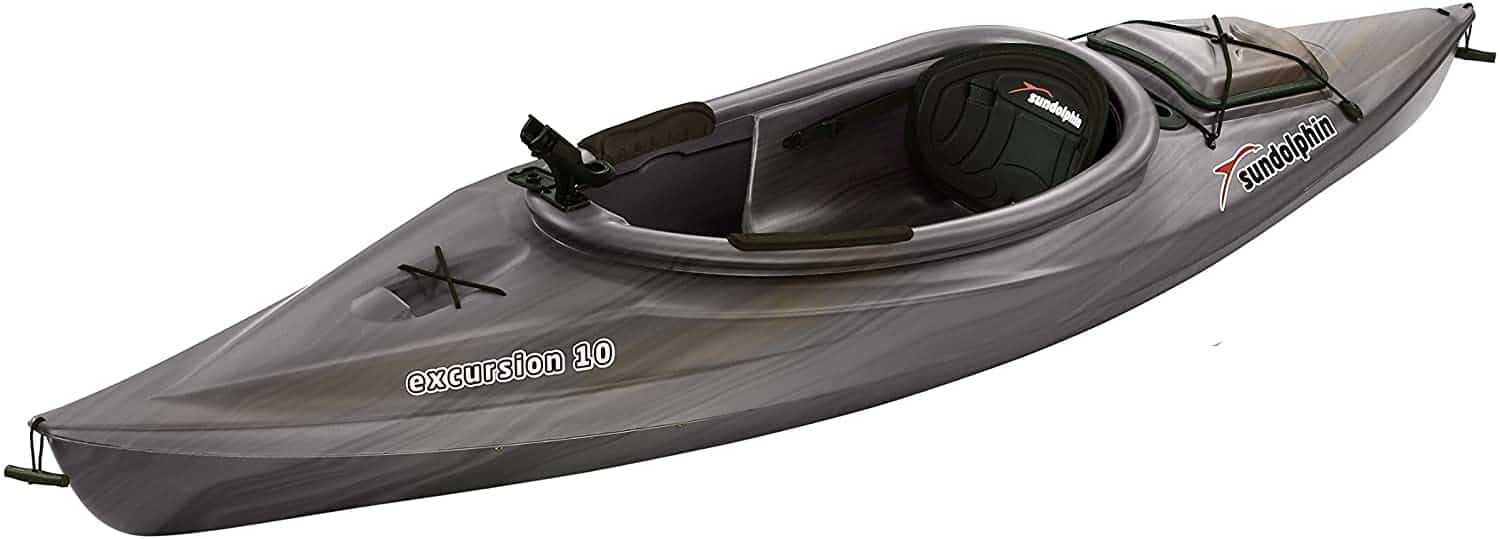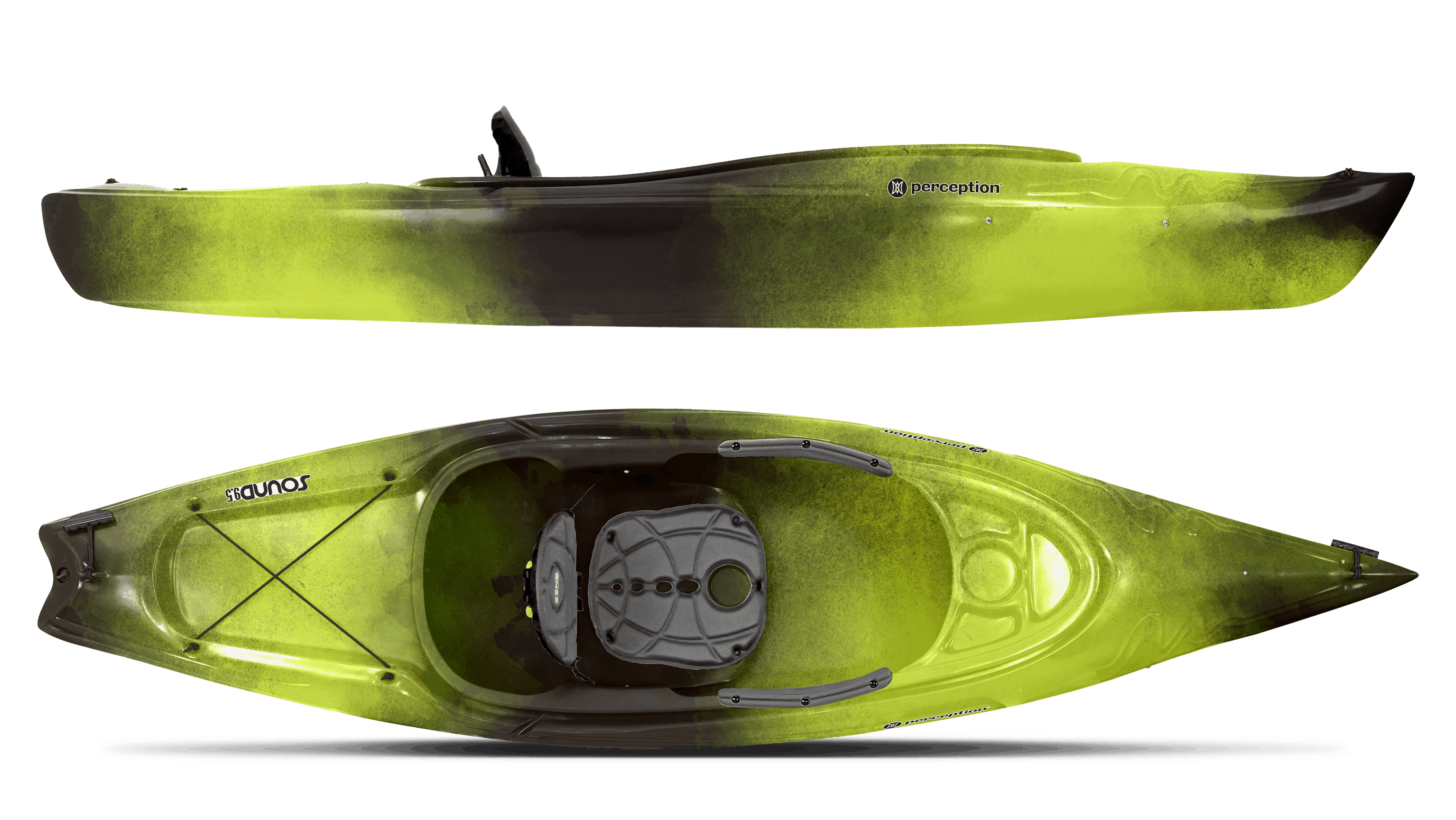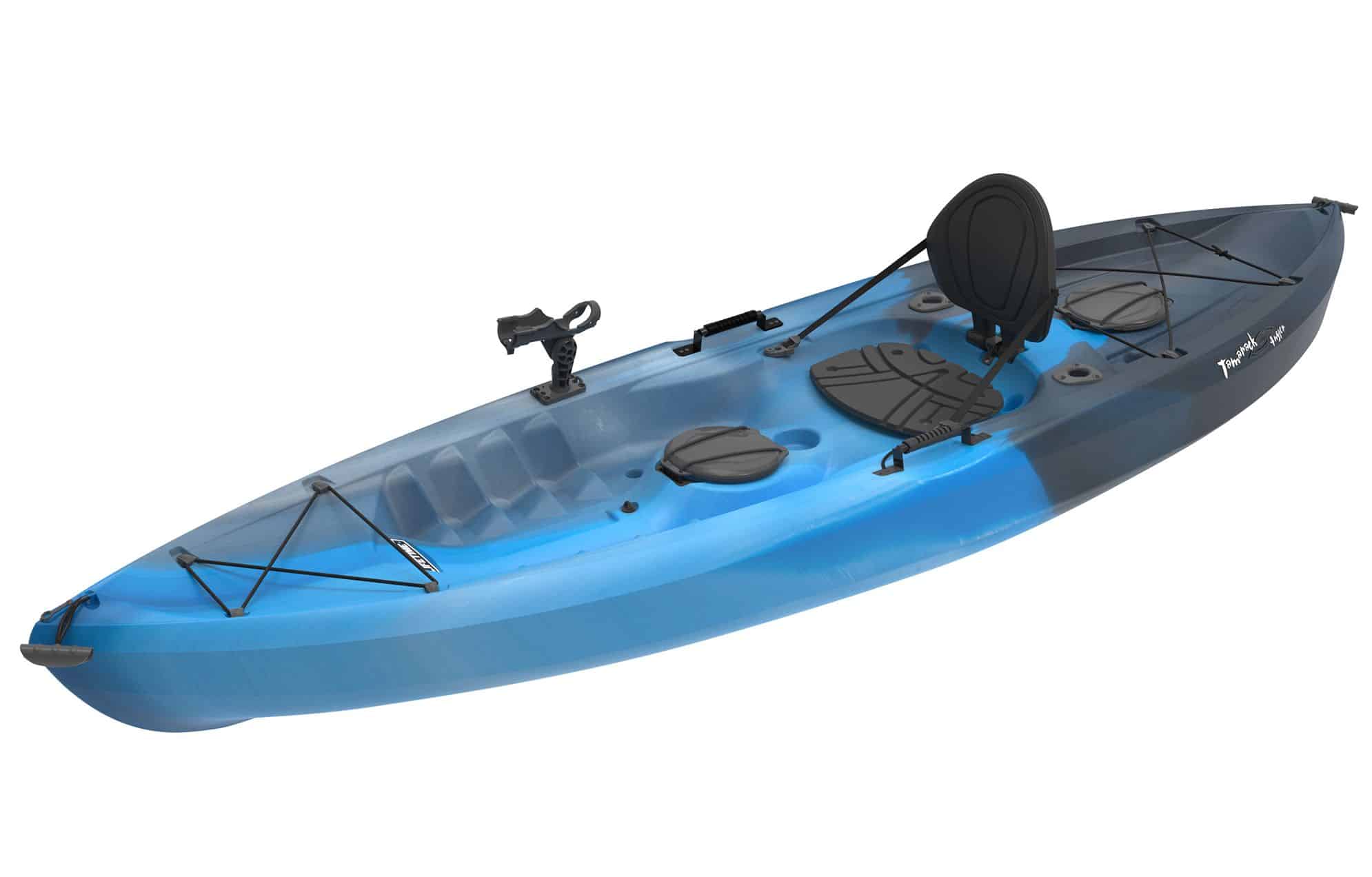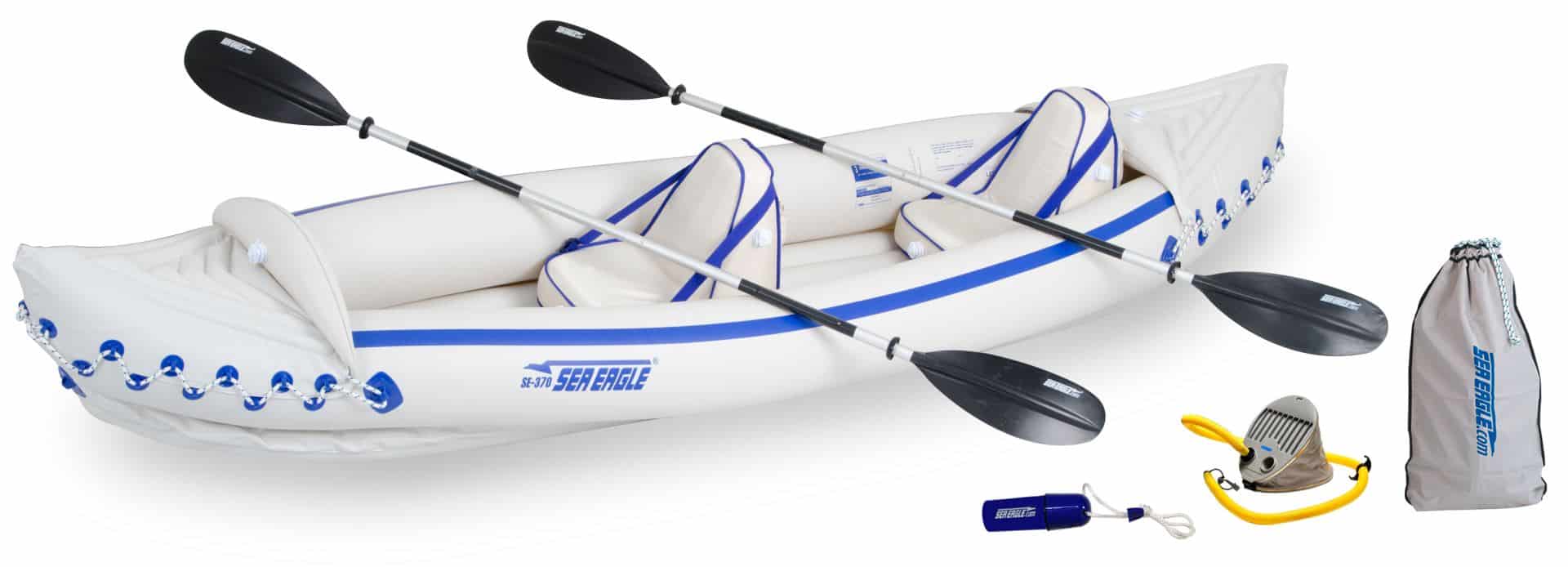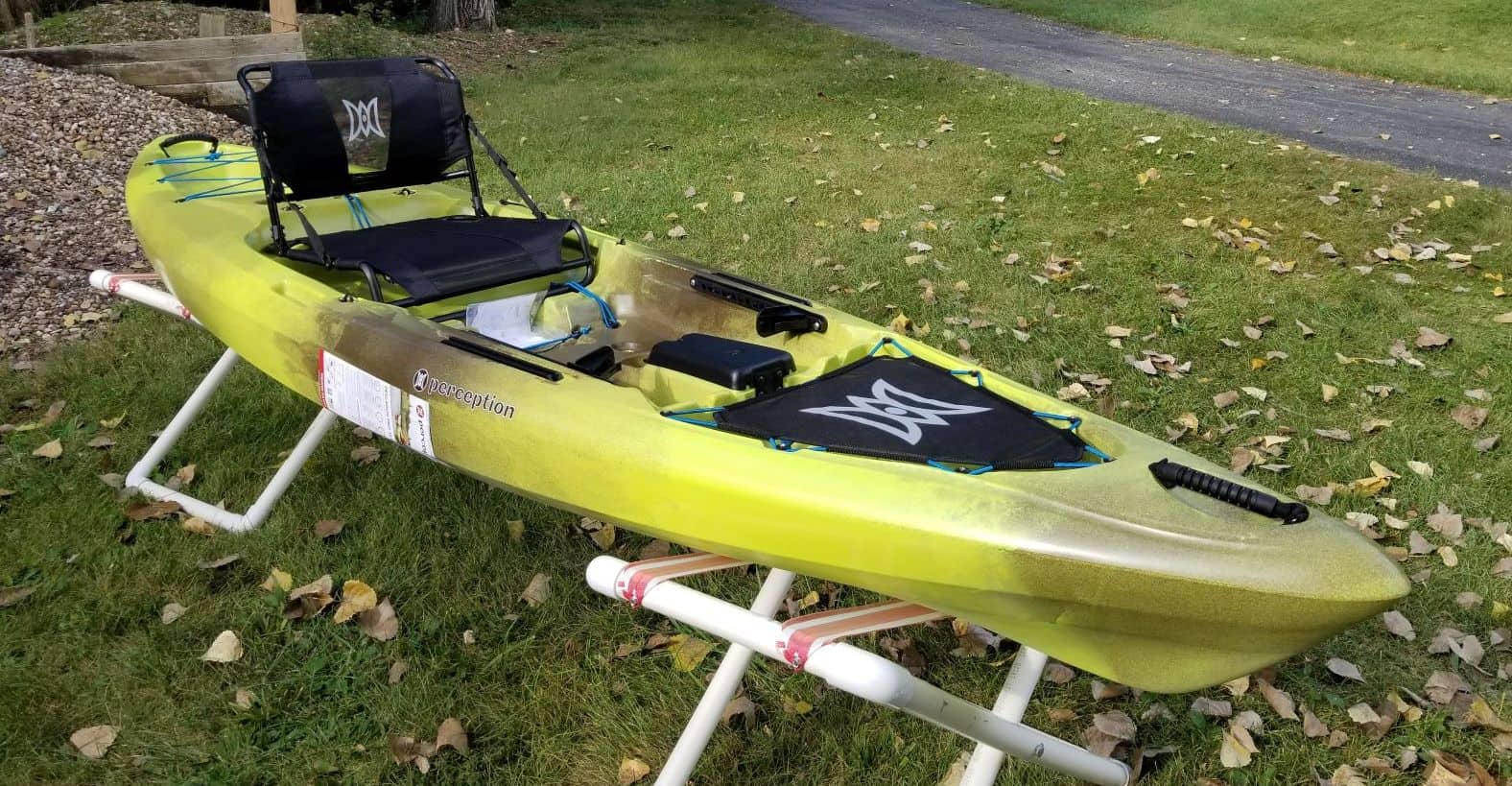The first thing to know is that if you are new to kayaking, you want the best kayak for beginners or paddleboard as the case may be.
If you’re thinking of breaking into the world of paddling water sports, you’ll quickly be faced with an important decision: making the choice of paddleboard vs kayak. If you choose the latter, check out our Advanced Elements AdvancedFrame Convertible – Best Inflatable Kayak.
These two paddling sports are becoming more popular, and many who are new to paddling are picking one of these sports to introduce them to the scene.
What’s the difference between these two water sports, and which one is better for you?
While both sports involve paddling at their core, they’re also very different in a number of important ways.
Consider these differences carefully during your purchasing process.
- Paddleboard vs Kayak: What Are They
- Paddleboard vs Kayak: The Key Differences
- Portability: SUPs Are Easier to Transport
- Gear Storage: Kayaks Store More of Your Stuff
- Fitness: Paddleboards Are Better for Your Core
- Price: Paddleboards Are Easier on Your Wallet
Paddleboard vs Kayak: What Are They
What is a Paddleboard?
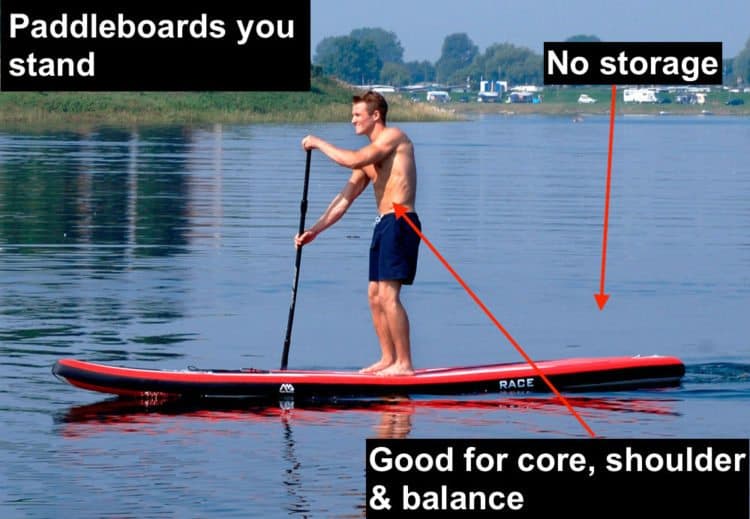
Paddleboarding is quickly becoming the most popular water sport. Stand-up paddleboards, or SUPs, are surf-style boards that you propel forward with a paddle and generally standup on while doing so.
There are a variety of different paddleboards on the market, separated by their shape and function. Depending on your preferences, you can purchase a SUP for yoga, surfing, racing, recreational use, and much more.
What is a Kayak?
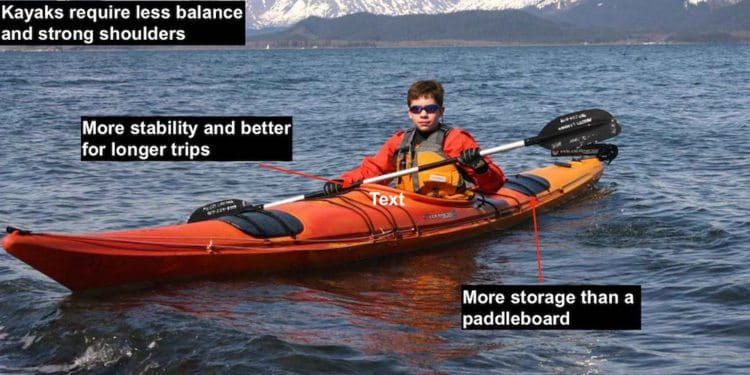
Kayaking is a more traditional water sport. As such, it’s a very popular sport that involves a small boat and double-sided paddle (some are inflatable for easier transport).
Much like paddleboarding, you can use kayaks in a variety of different ways. You can buy boats made for whitewater rapids, fishing, racing, recreational use, and more. And while we’re talking about being on water, take a look at our amazing review of 20 awesome swimming pools that you can’t swim in.
Paddleboard vs Kayak: The Key Differences
| Paddleboard | Kayak | |
|---|---|---|
| Stability | Less stable | More stable |
| Size | 8-12 feet long | 9-14 feet long |
| Portability | More portable | Less portable |
| Durability | Less durable | More durable |
| Gear Storage | Minimal to no storage | Lots of storage options |
At their core, both paddleboards and kayaks offer many similarities. They’re both propelled using a paddle, and they’re both incredibly versatile. Whether you’re a beginner or pro, both options provide a challenge and fun time.
However, there are also many differences in the SUP vs. kayak question that you need to consider before making a purchase. Check out the best kayak for kids.
Stability: Kayaks Offer More Stability
- Stand-up paddleboards, as their name implies, require you to stand during use. When you stand, you raise your center of gravity farther away from the water, which typically results in a higher chance of falling. This is especially true in choppy water.
- Sitting in a kayak keeps your center of gravity closer to the water, creating a much stabler experience overall. While there’s still a chance of flipping in these boats, especially in rough water, it’s less likely when compared to paddleboarding. Read about the best tandem kayak.
Maneuverability: Both Are Maneuverable in Their Own Way
- Both options are maneuverable in different ways, depending on the type you’re using. Some types of kayaks are more maneuverable than certain types of SUPs, and vice versa. There’s no clear winner in this category, especially as you become more skilled in paddling both vessels. The best Bluetooth speakers will keep the music going during your adventure.
Make sure you read about the two different types of Kayaks.
Portability: SUPs Are Easier to Transport
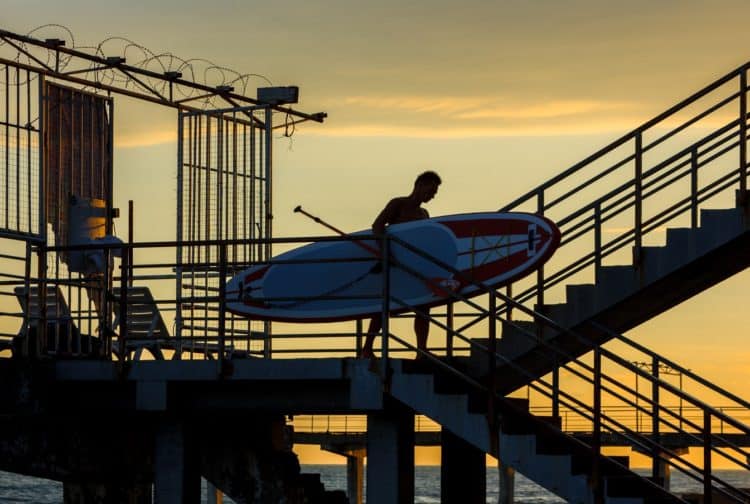
- SUPs come in a variety of sizes, ranging between eight feet and over 12 feet long. Most of the boards feature a handy carrying handle in the middle of the board, allowing you to easily carry them to and from the water. They are also typically much lighter than kayaks. Because of this lightweight, you can usually carry them over your head or under your arm with ease.
- Kayaks are much heavier than paddleboards, especially the hardshell options. These boats typically measure in length between nine feet and 14 feet. Since they’re heavier and thicker, they can be difficult to carry by hand or store on your vehicle. Inflatable kayaks are the exception here, as they can deflate and fold into a convenient carrying bag. Learn more about camping and hiking gear.
Durability: Kayaks Can Take More of a Beating
- Most paddleboards have fins on their underside which are more susceptible to damage in shallow waters. They’re also typically made from a less durable material than kayaks, making them more likely to get damaged if you accidentally hit rocks or branches in the water.
- Kayaks are built for durability, especially the whitewater and touring types. They’re usually made from durable composite materials that can take a beating, even if you accidentally hit rocks or other items in the water. If you’re looking for the more durable option, then you’ll want to consider kayaks.
Gear Storage: Kayaks Store More of Your Stuff
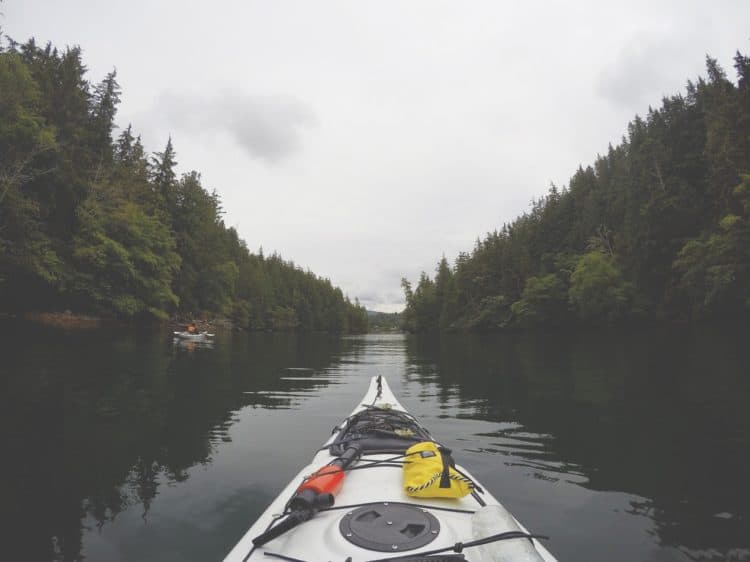
- Unless you install it yourself—which is always an option—paddleboards feature little to no storage for your gear while you’re on the water. Some paddlers will install webbing or other kinds of netting to store simple gear. If you decide to do this, expect your stuff to get wet.
- If you’re going on a long trip on the water, most kayaks provide some kind of waterproof gear storage. The storage usually comes in the form of holes built directly into the hull of the boat, with a watertight lid to keep your gear dry. The boats will also feature some kind of webbing to store other gear in the cockpit or on the hull.
Fitness: Paddleboards Are Better for Your Core
- When you paddle on a SUP, you get a killer workout for your core, arms, and legs. Many fitness and yoga enthusiasts use their boards as a normal part of their exercise routine. If you want something to give you a more comprehensive workout, paddleboards will do the trick.
- Kayaks do well to work out your arms and sometimes your legs. Most people go kayaking for the thrill of conquering the rapids or enjoying a recreational paddle on the lake, not for intense workouts.
Price: Paddleboards Are Easier on Your Wallet
- Both paddleboards and kayaks are priced similarly for the initial purchase. However, you might save more money in the long run when you buy a SUP, especially when you consider the higher maintenance costs for kayaks. The boats are harder to store than the boards, unless you buy inflatable, and you usually have to buy more to be able to properly transport the boats on your vehicle.
Related Articles:

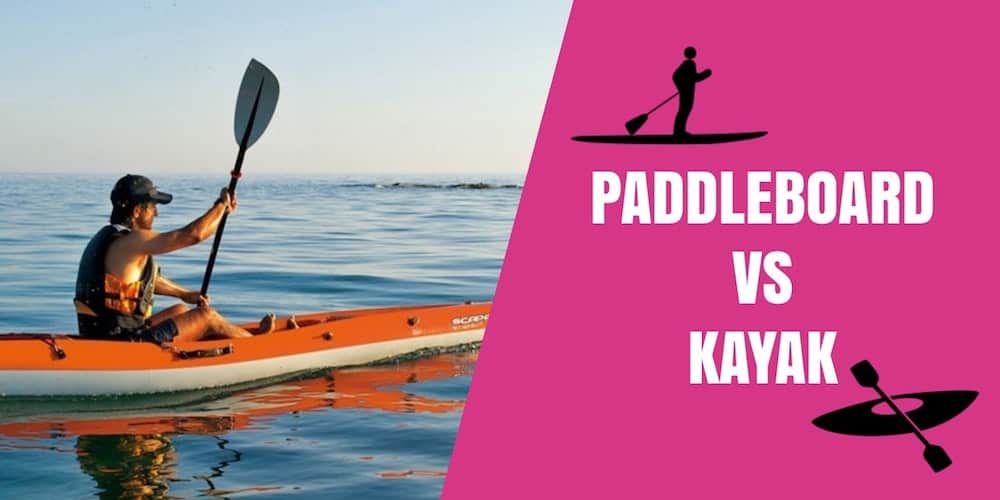













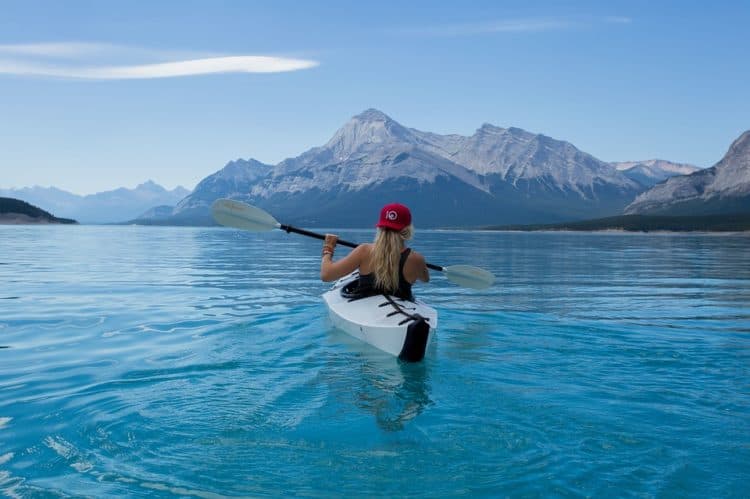

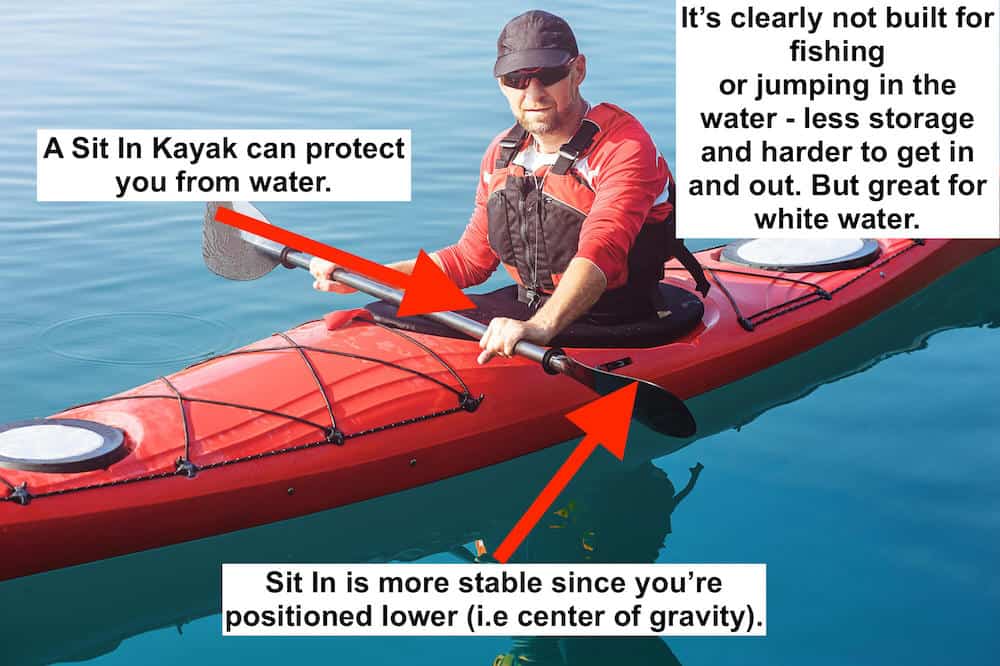
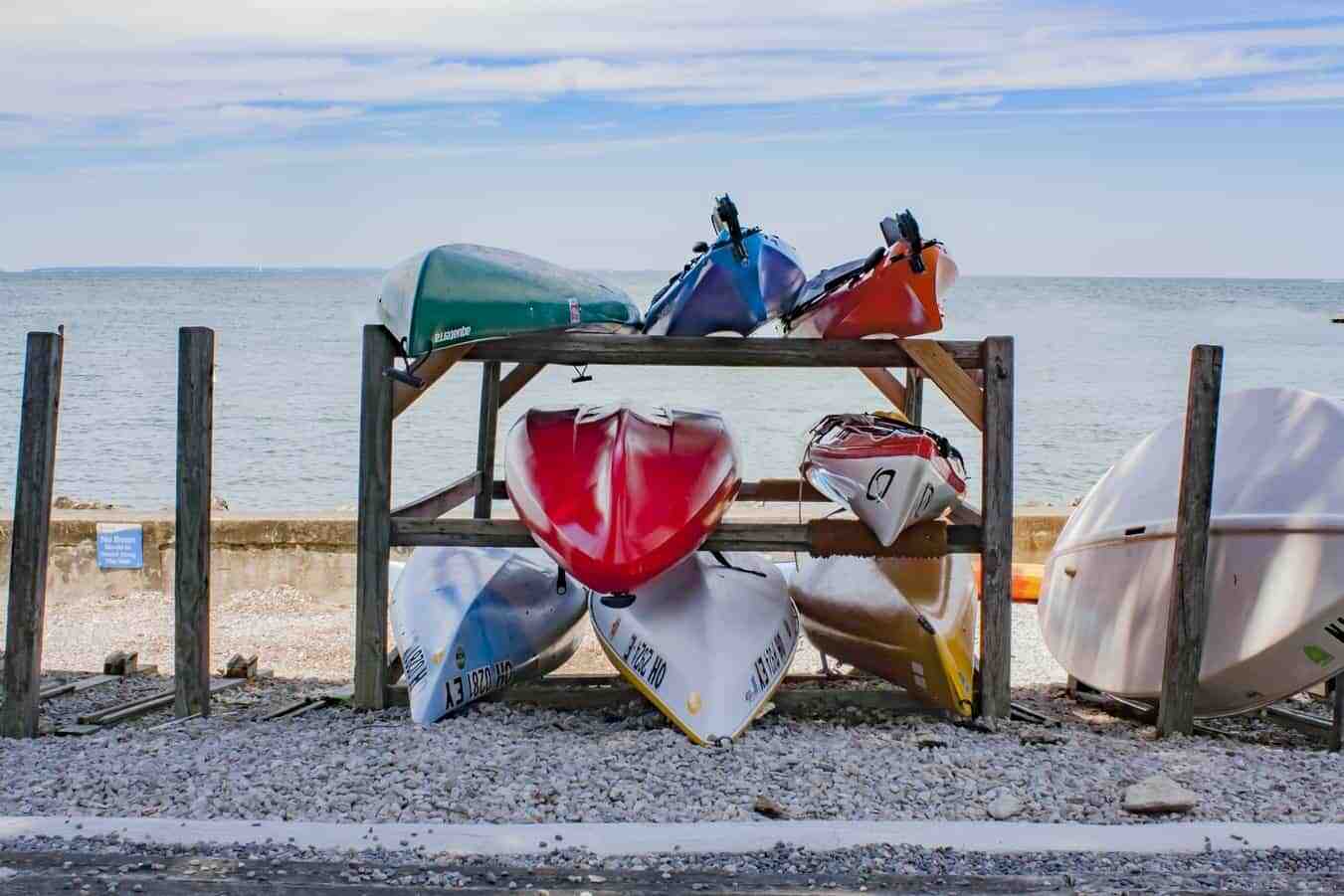
![Best Kayak in [year] ([month] Reviews) 16 Best Kayak in 2026 (January Reviews)](https://www.gadgetreview.dev/wp-content/uploads/best-kayak-image.jpg)
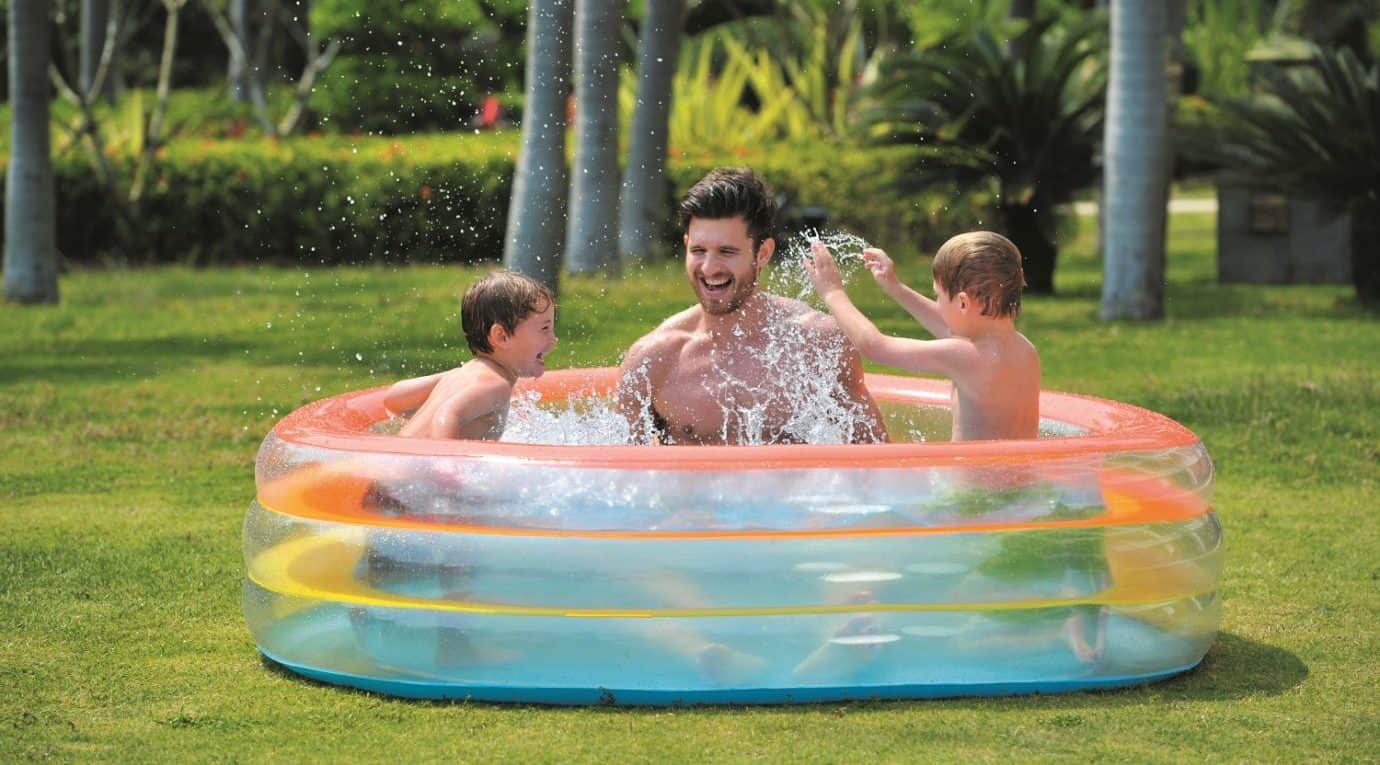

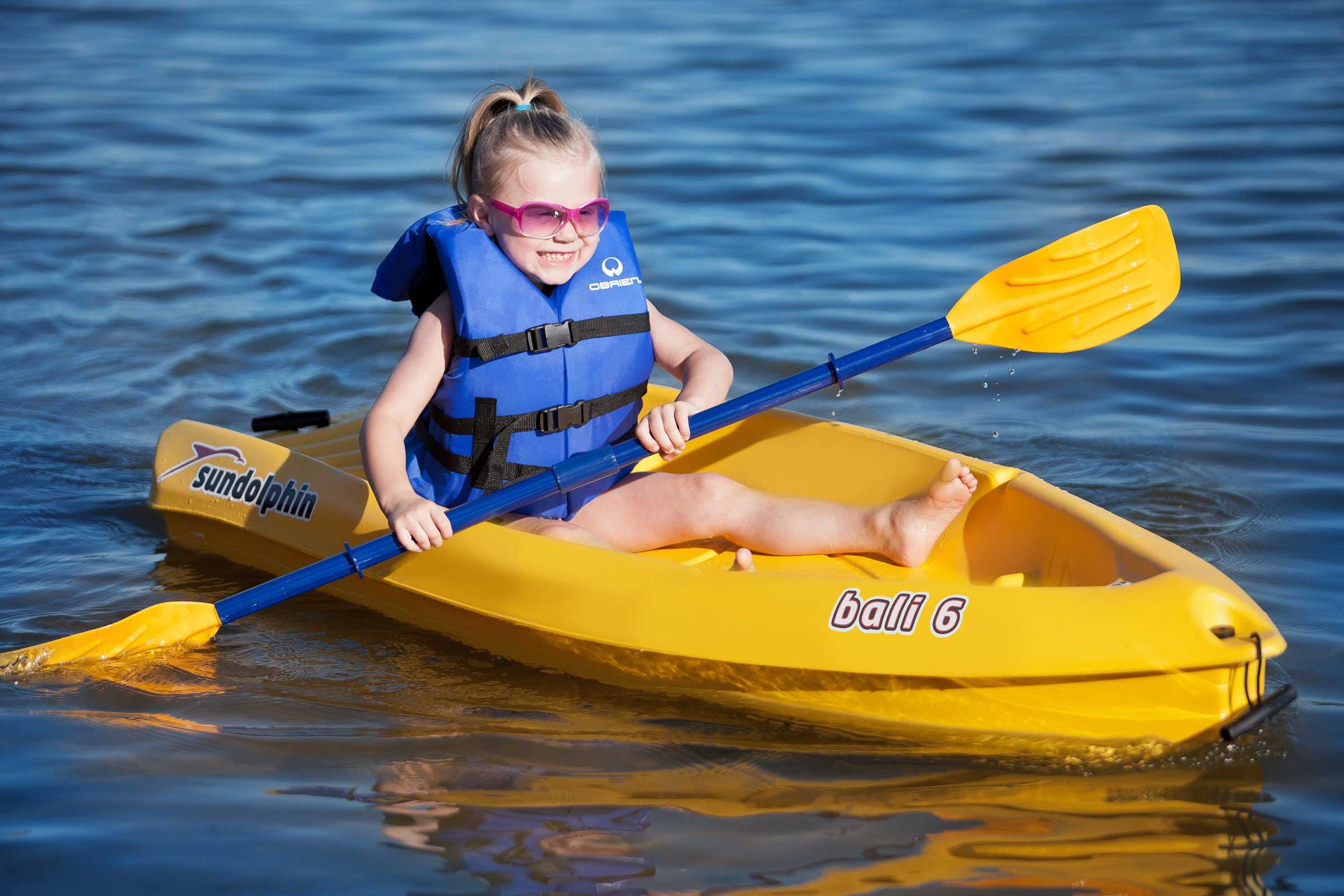
![7 Best Walkie Talkies to Stay in Contact in [year] 20 7 Best Walkie Talkies to Stay in Contact in 2026](https://www.gadgetreview.dev/wp-content/uploads/best-walkie-talkies-to-stay-in-contact.jpg)
![Best Kayak for Beginners in [year] 21 Best Kayak for Beginners in 2026](https://www.gadgetreview.dev/wp-content/uploads/Youth-Kayak-1.jpg)
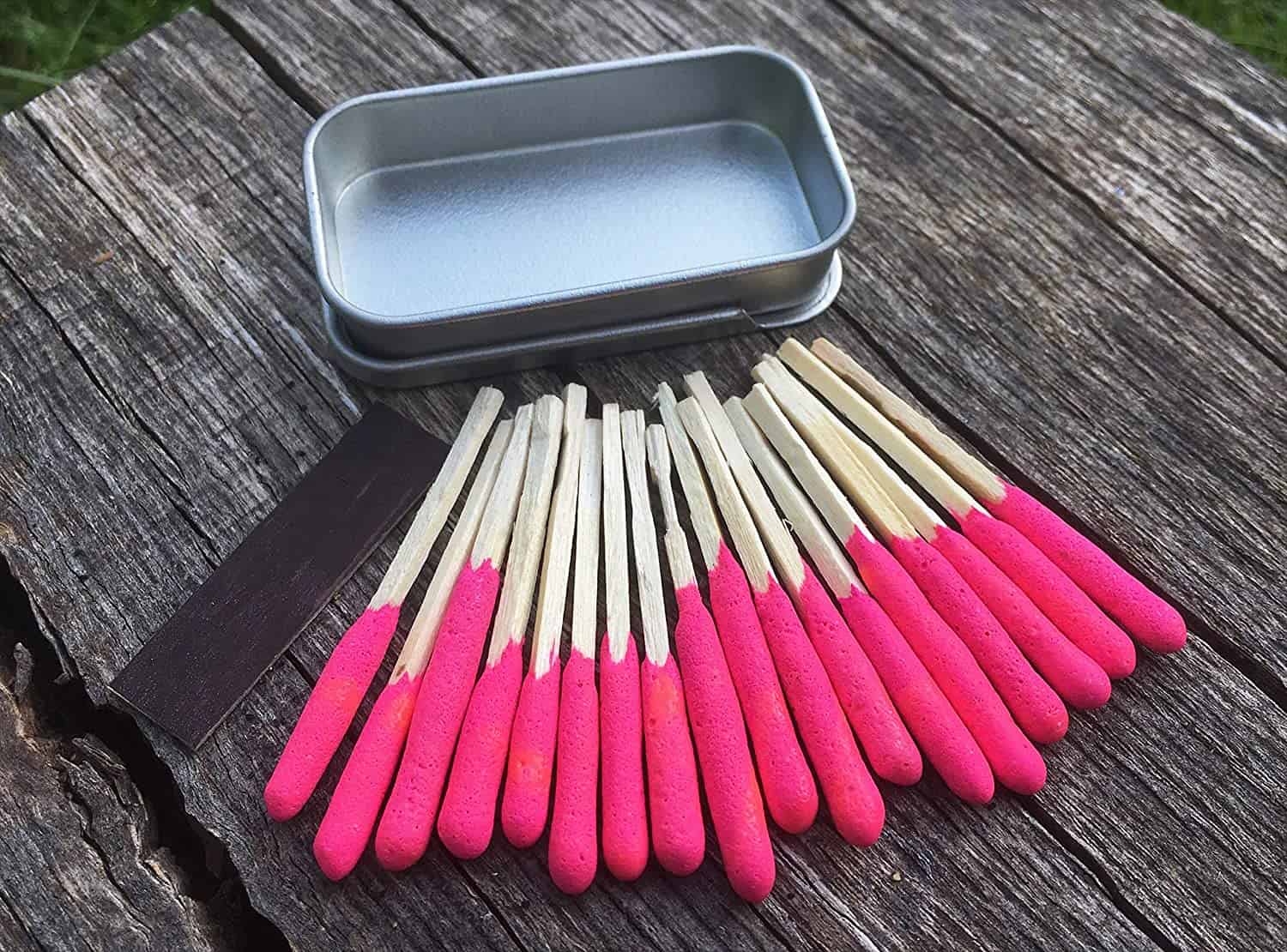
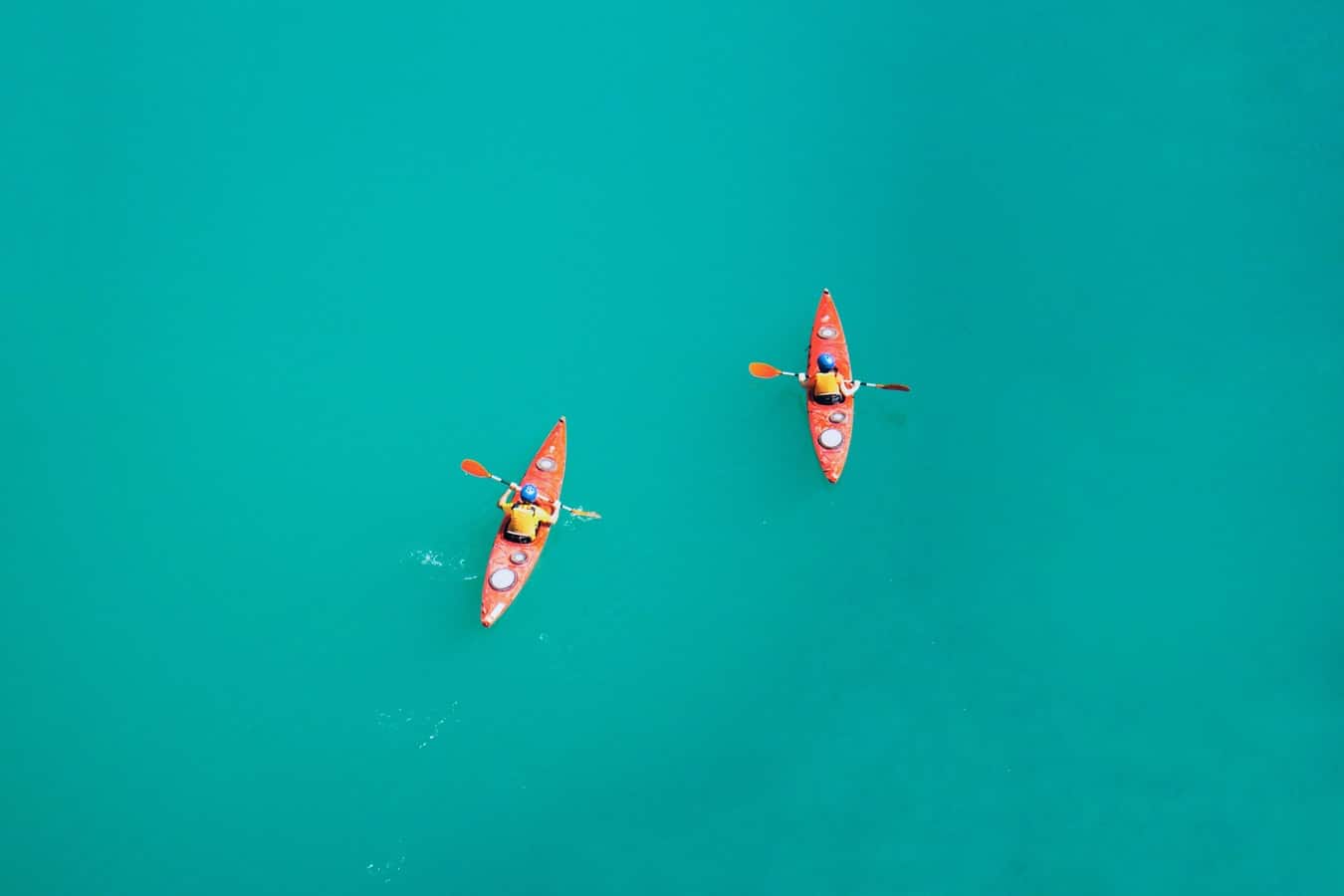
![7 Best Carabiner in [year] 24 7 Best Carabiner in 2026](https://www.gadgetreview.dev/wp-content/uploads/best-carabiners.jpg)
![7 Best Ropes in [year] 25 7 Best Ropes in 2026](https://www.gadgetreview.dev/wp-content/uploads/best-rope.jpg)

